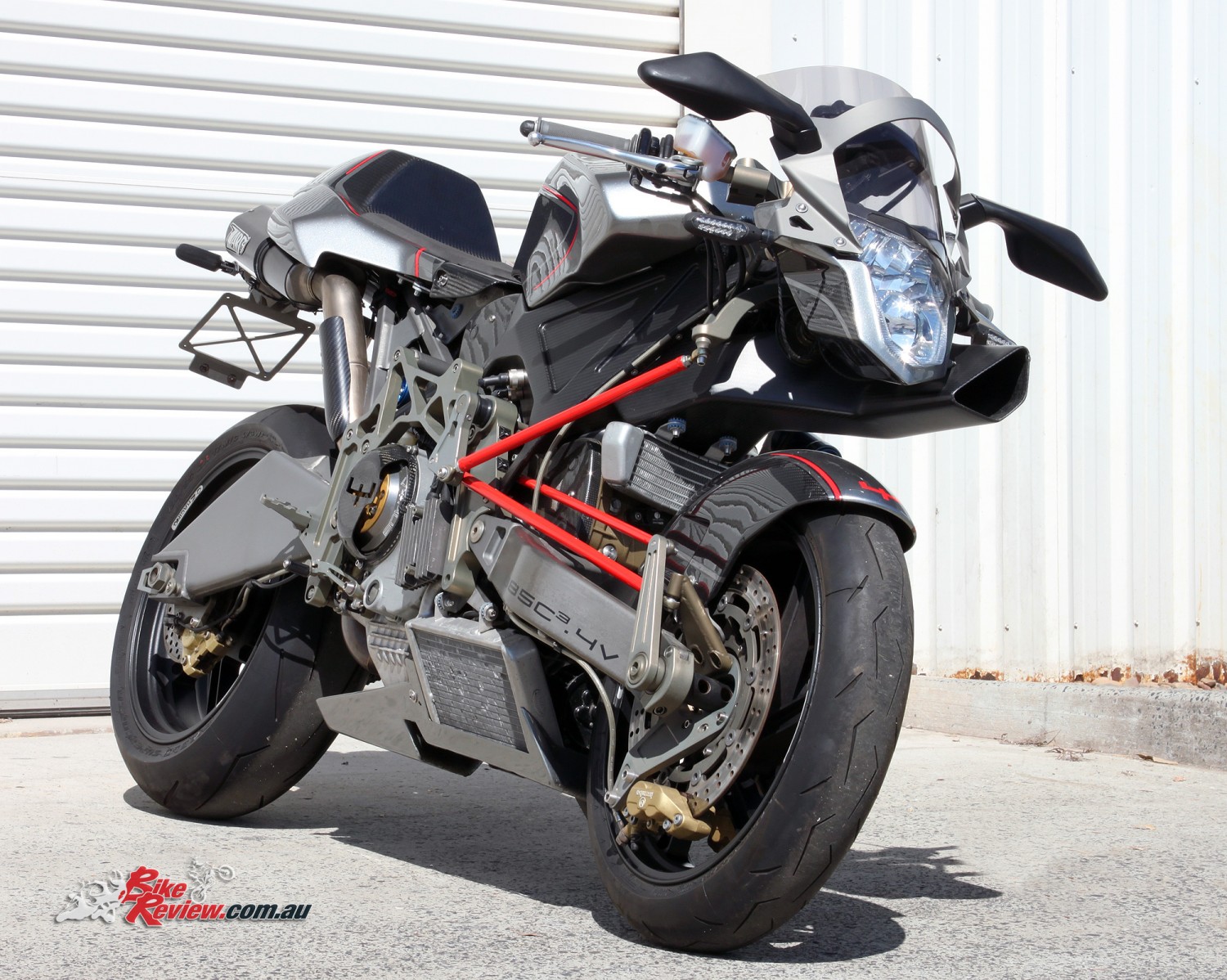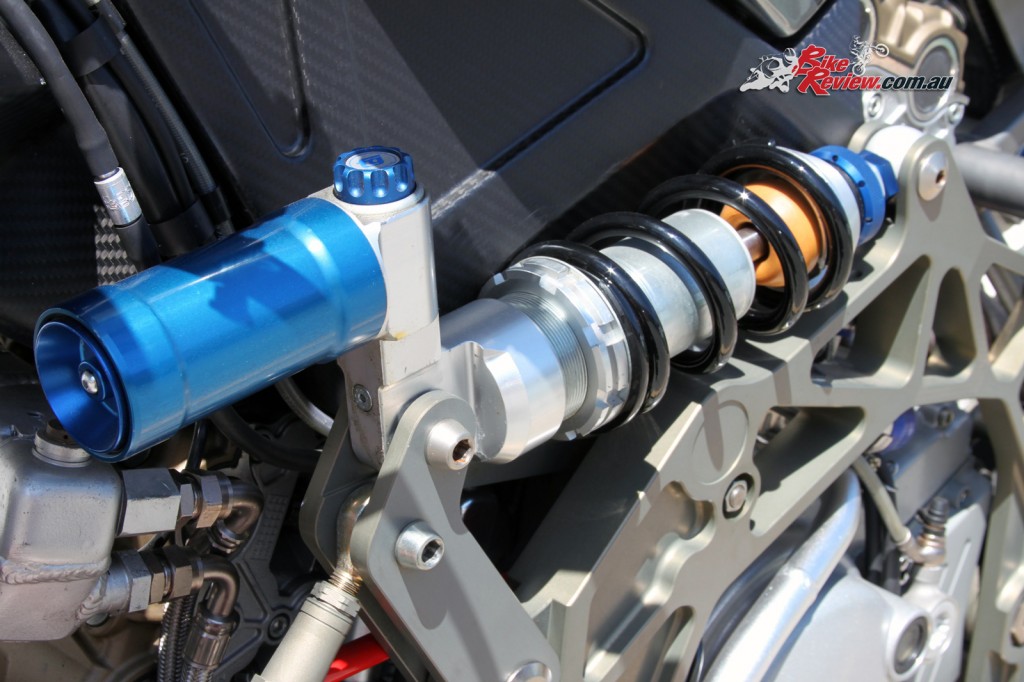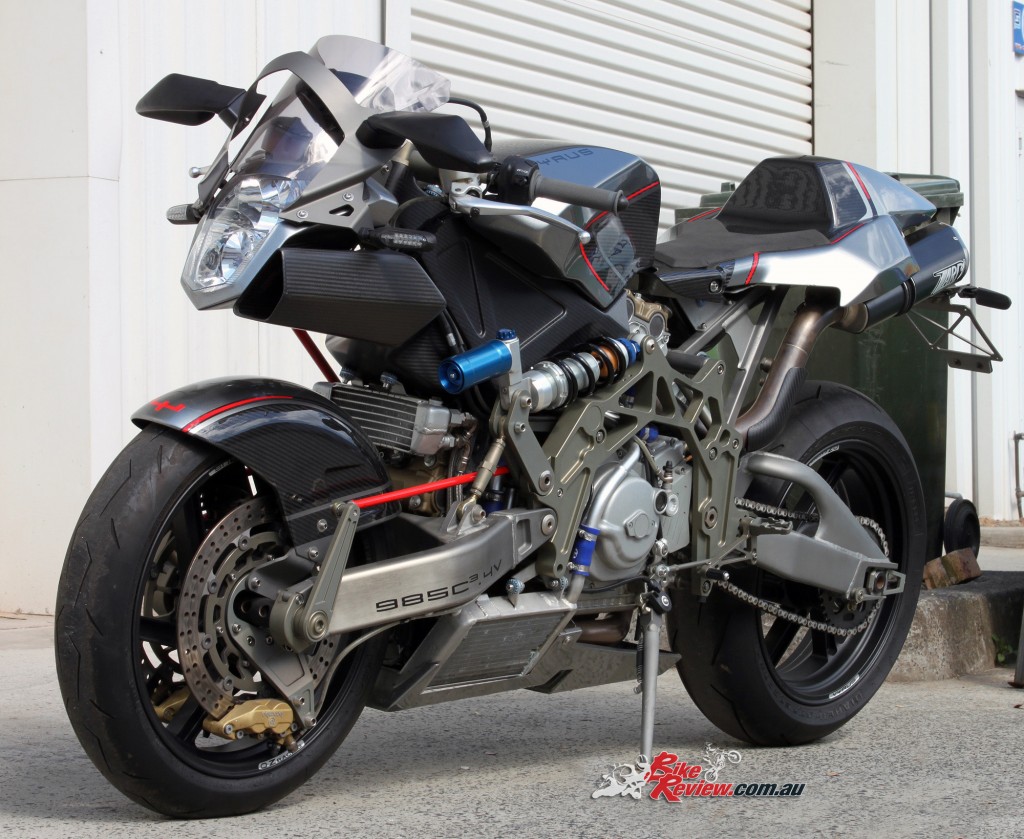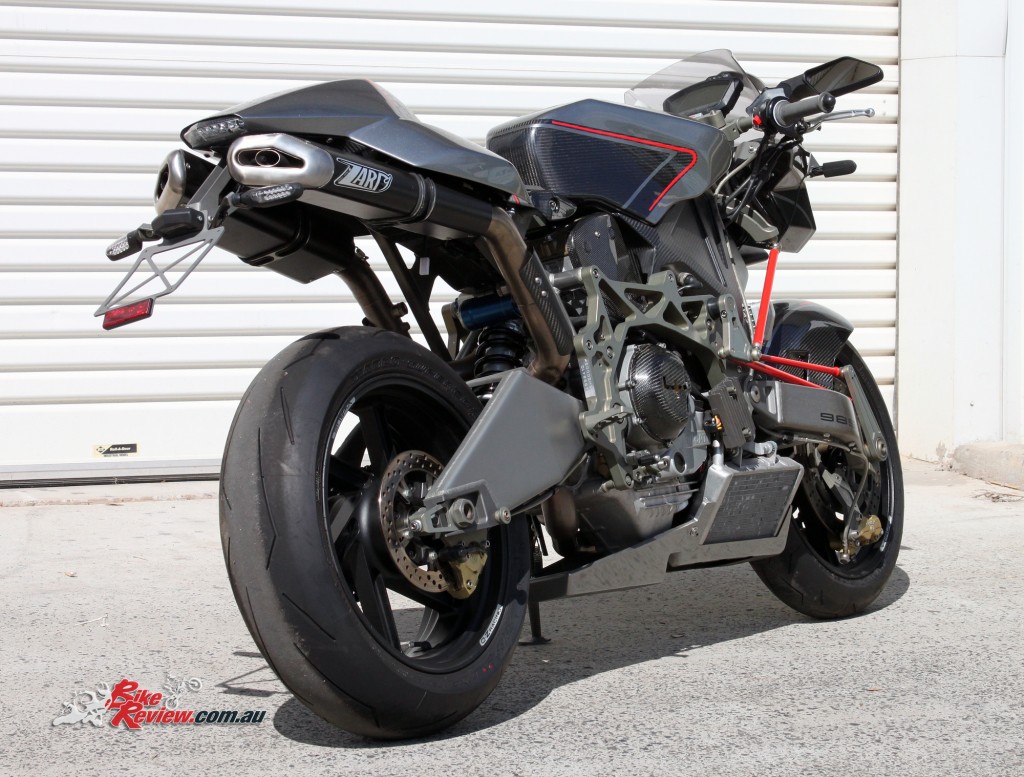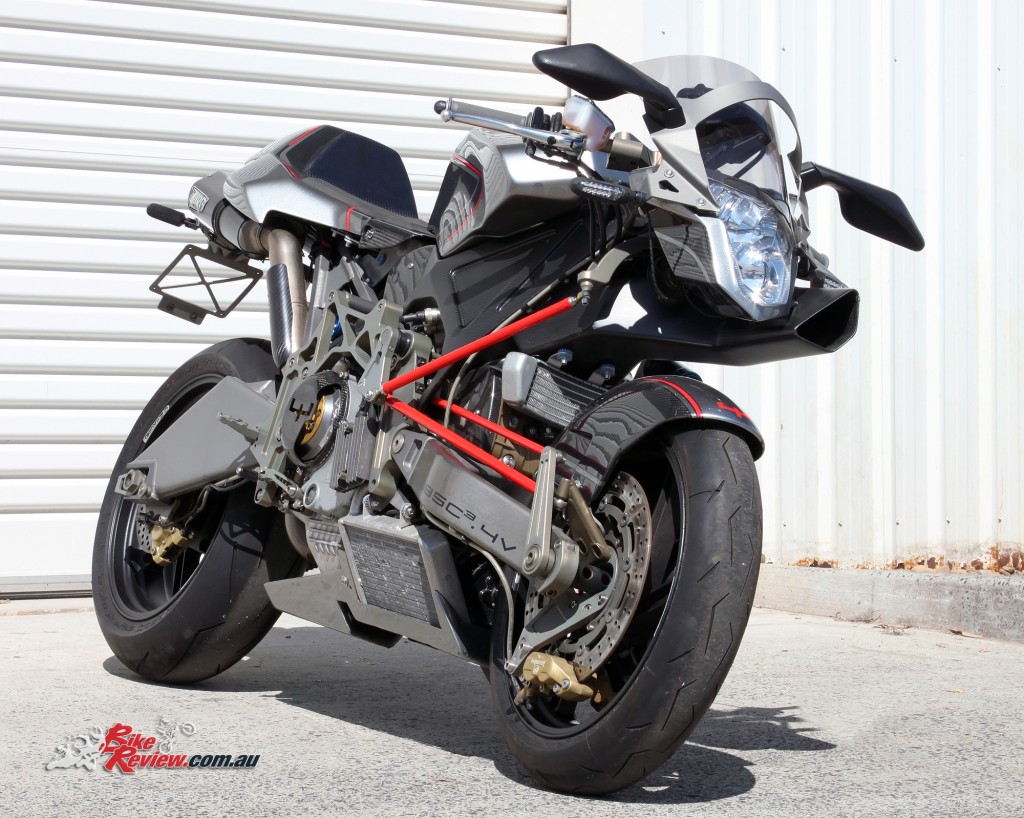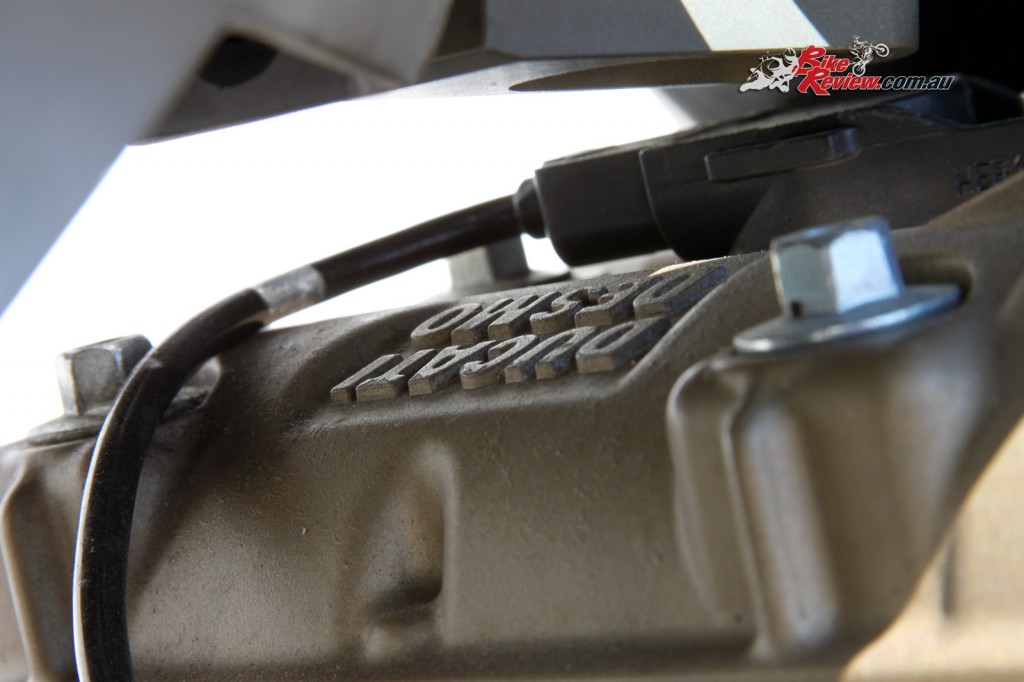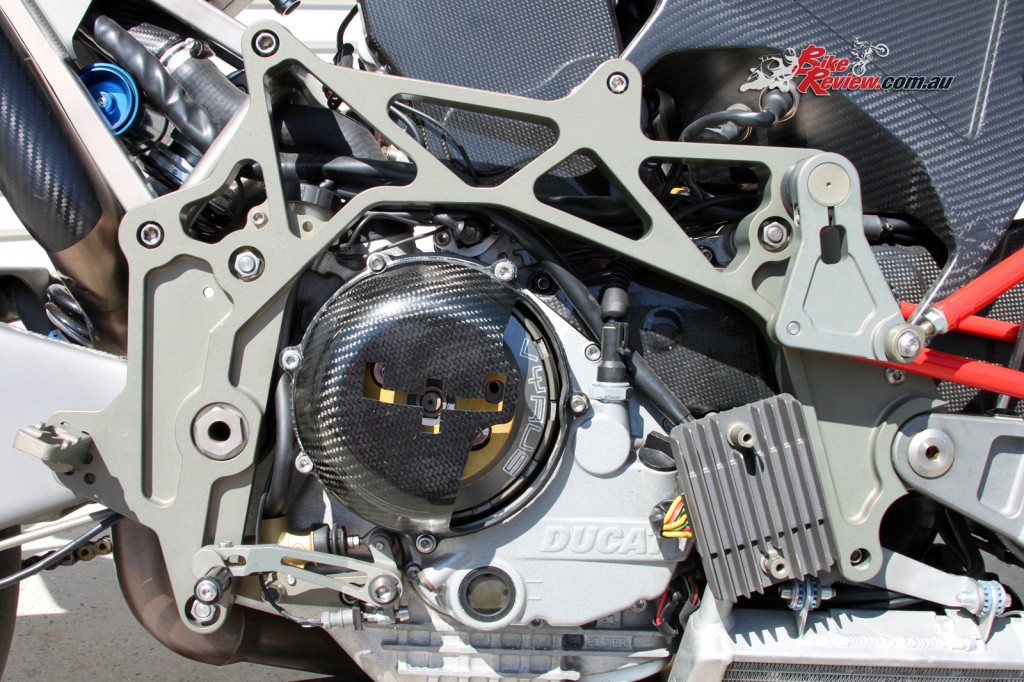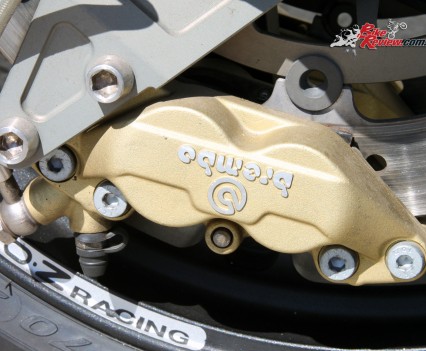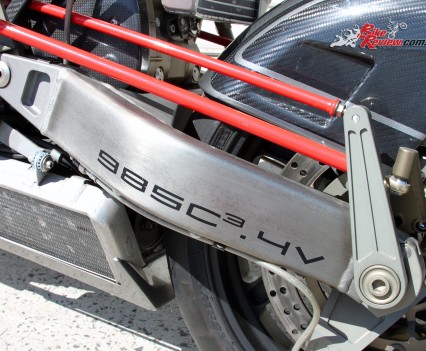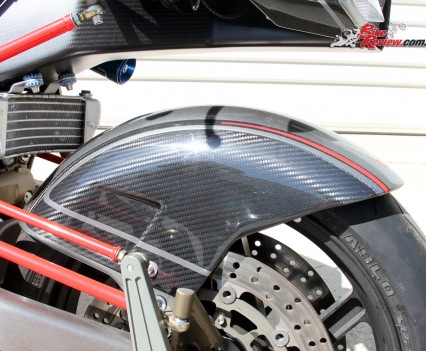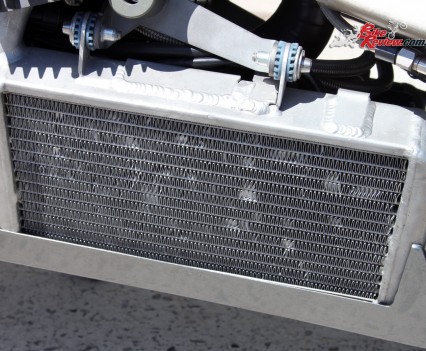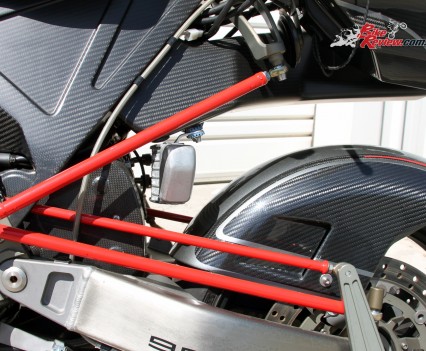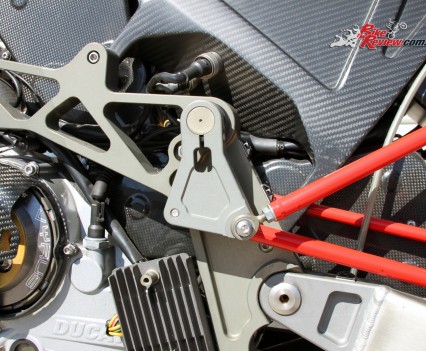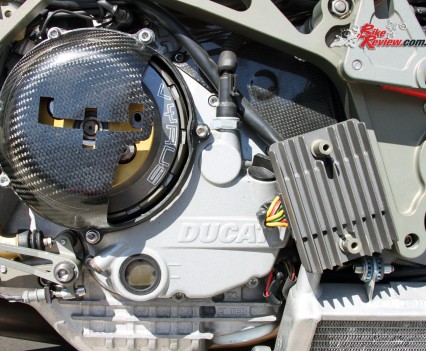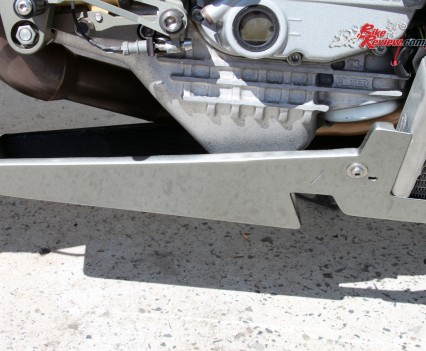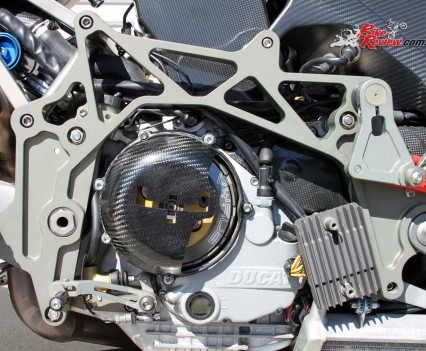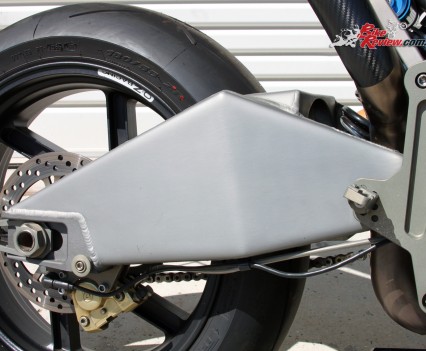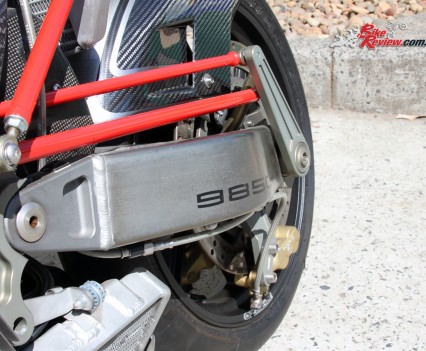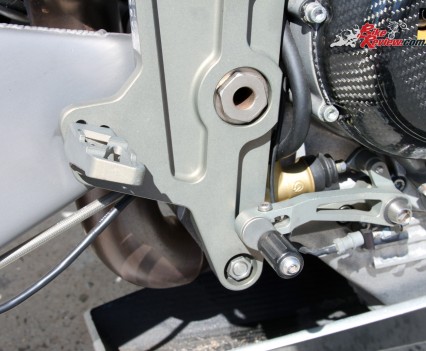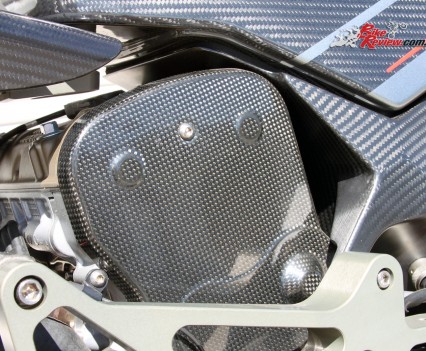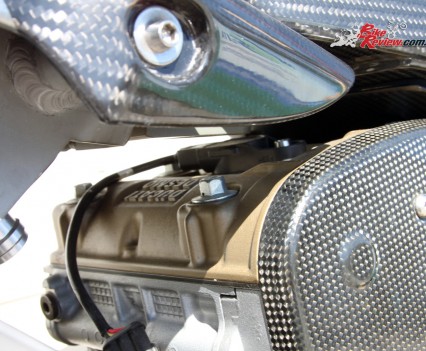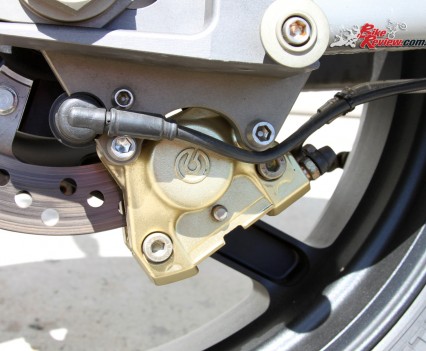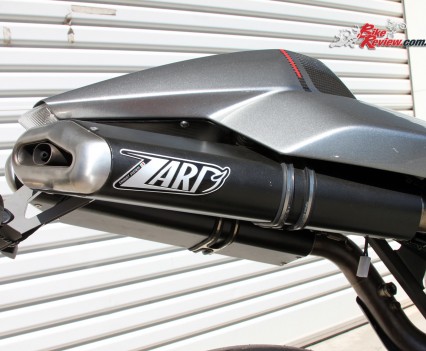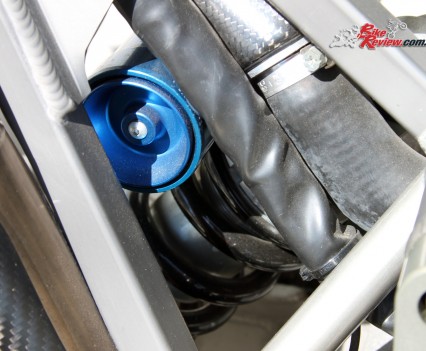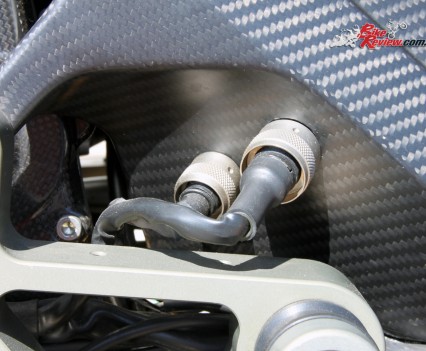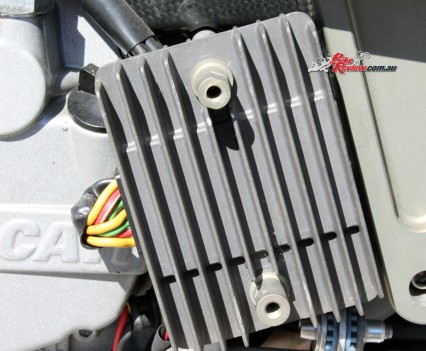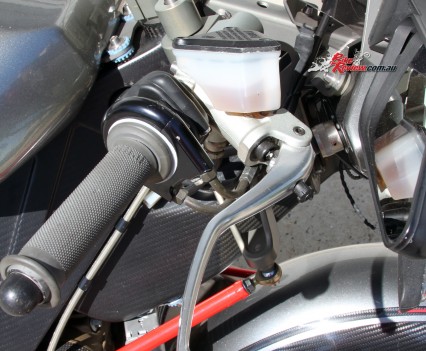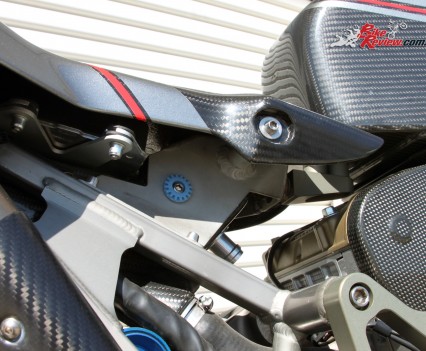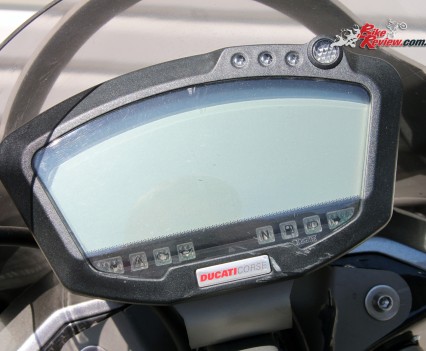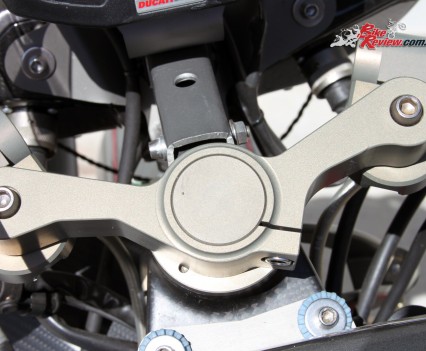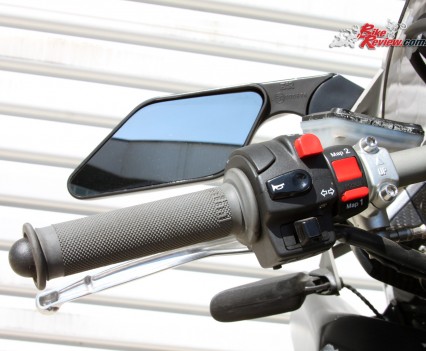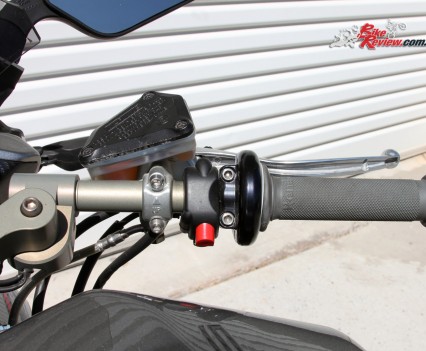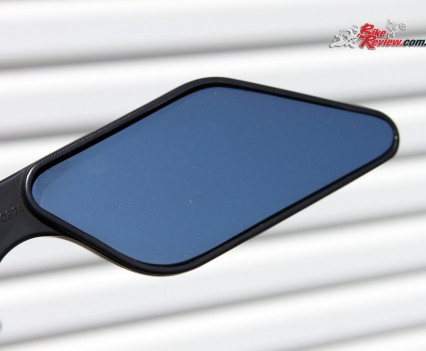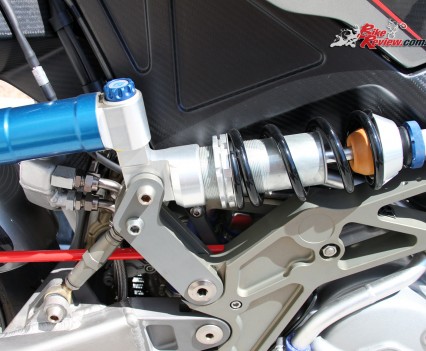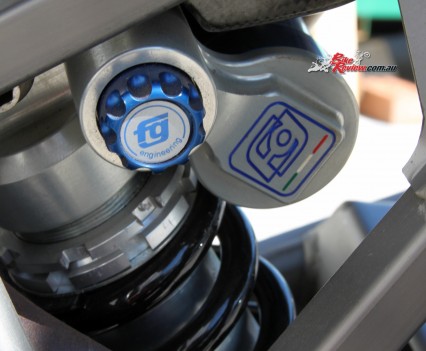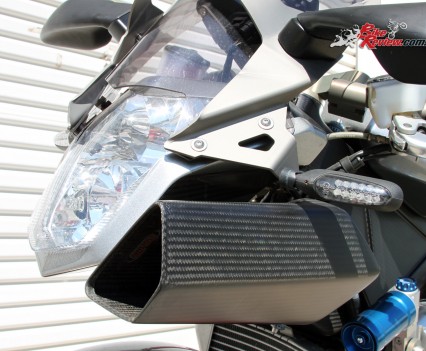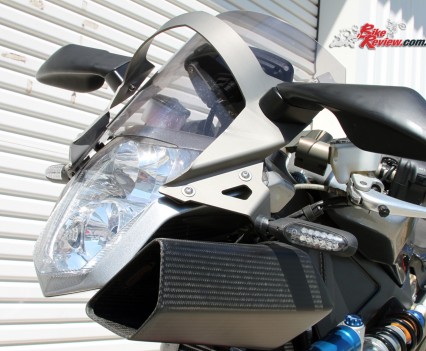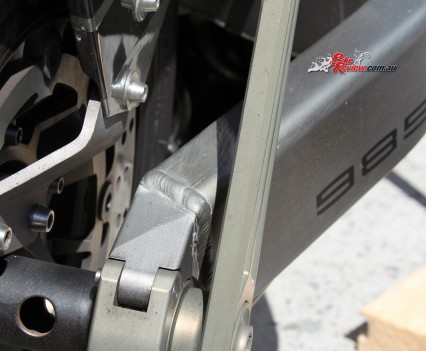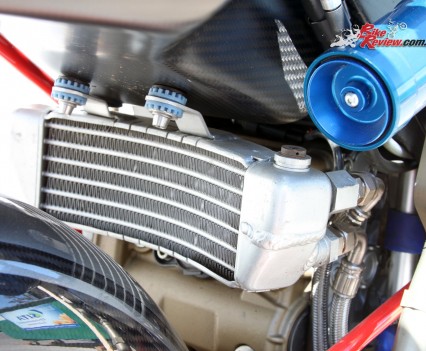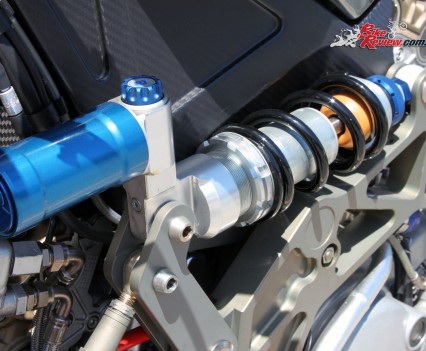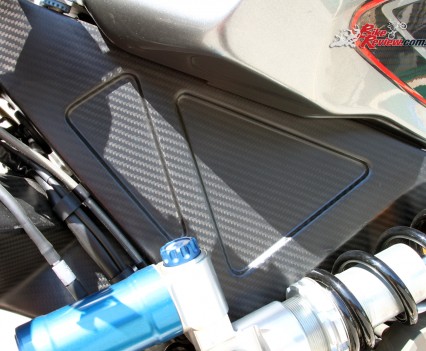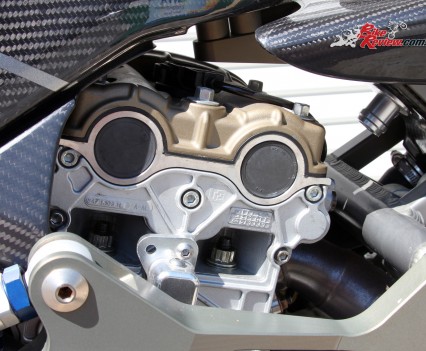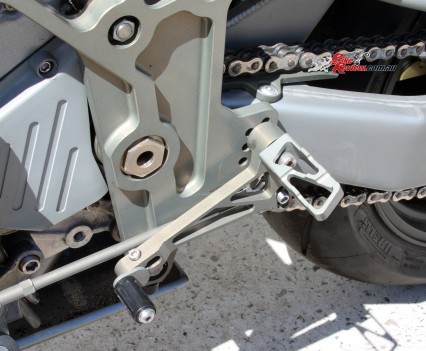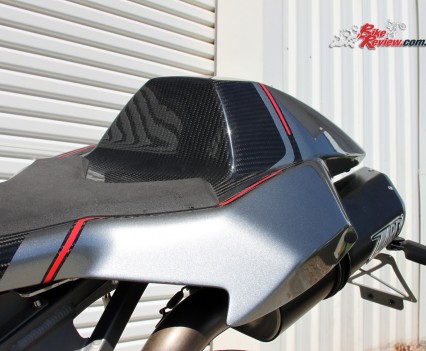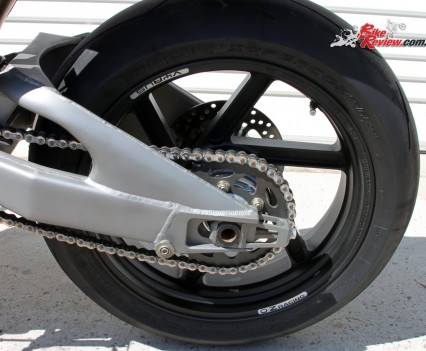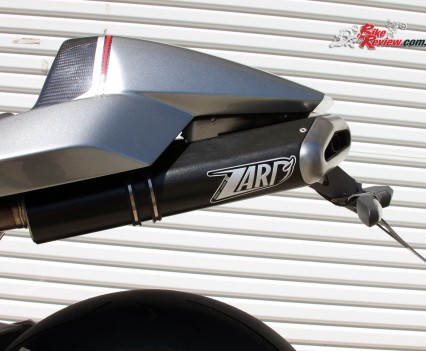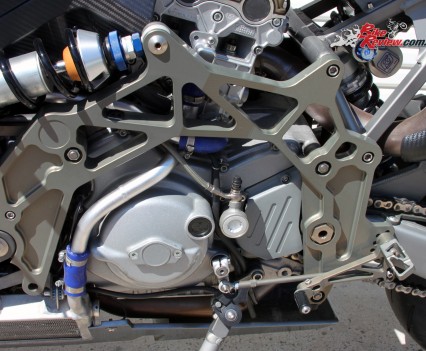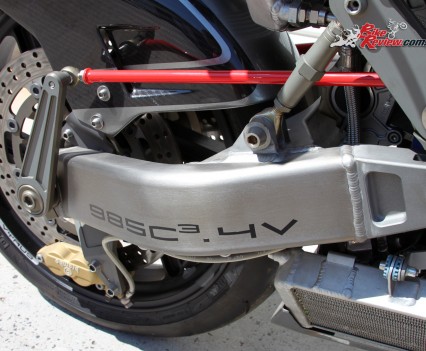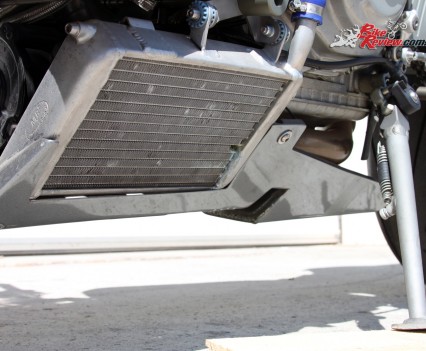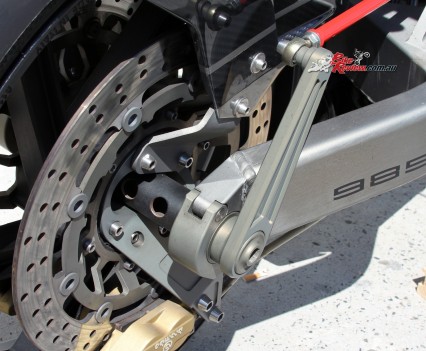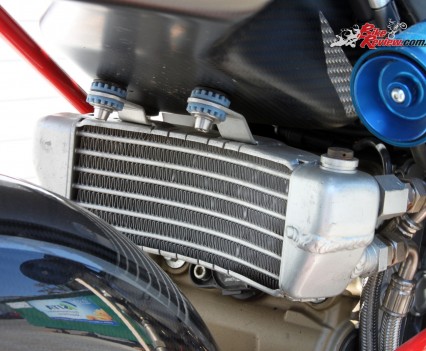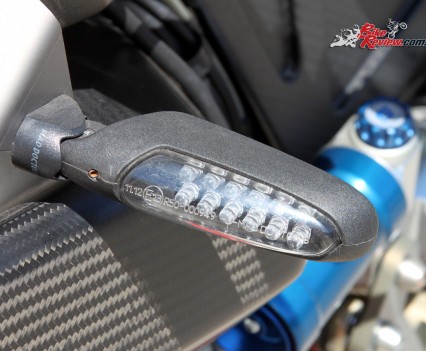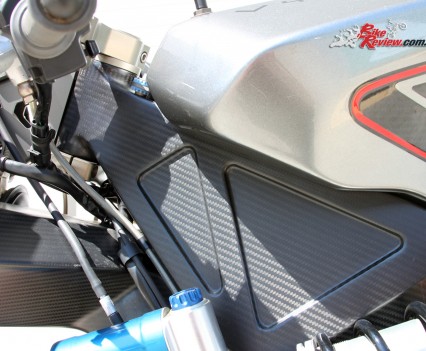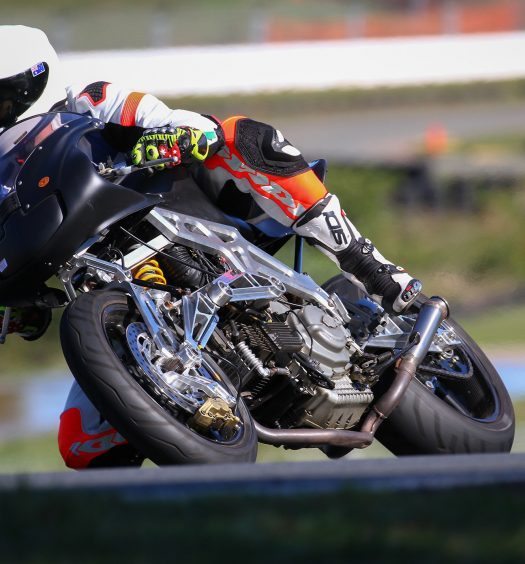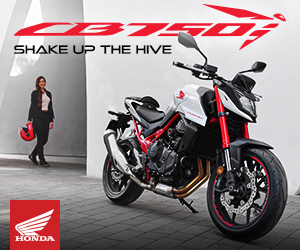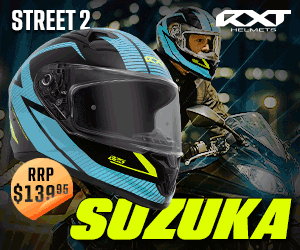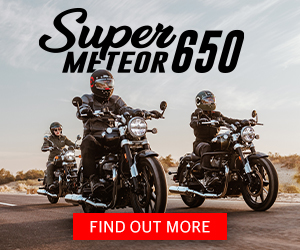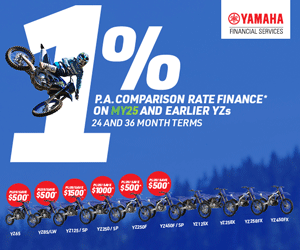The Vyrus 985C³ 4V. The Vyrus motto, "Pura fullya technologica," means, "Pure crazy technology," and it is an apt description. Words & Photography: Kris Hodgson
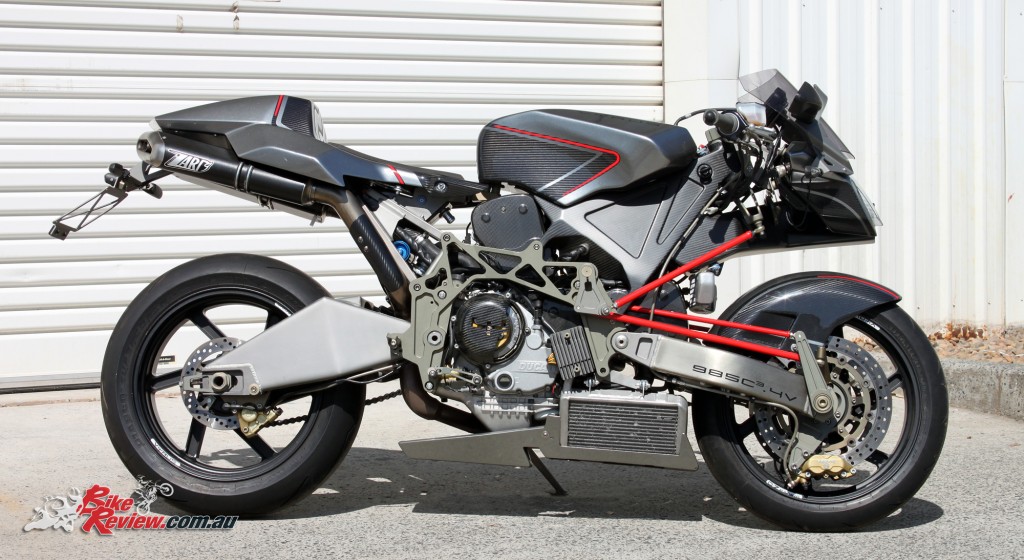
The Vyrus 985C³ 4V was space age when released and a decade later nothing has changed. It’s still an eye catching piece of machinery.
Vyrus is a name that immediately brings to mind the very essence of exclusivity in the motorcycling world. Owned and run by Ascanio Rodorigo it is based in Rimini, Italy and can claim the influences of such greats as Dervis Macrelli.
Run by just five staff, this motorcycle manufacturer produces a range of bikes best known for their hub-centre steering design, differing from the current industry favourite of front forks, such as the earlier Vyrus 984C³ 2V, 985C³ 4V and 987C³ 4V, with the 987 at one point holding the title of the most powerful production motorcycle in the world – utilising a Ducati 1098R engine, weighing in at just 155kg wet and putting out 184 horsepower on the base model.
If that wasn’t enough it can also come fitted with a supercharger, boosting power output to 211 horsepower… at a small premium but complete with the ultra-exclusive claim.
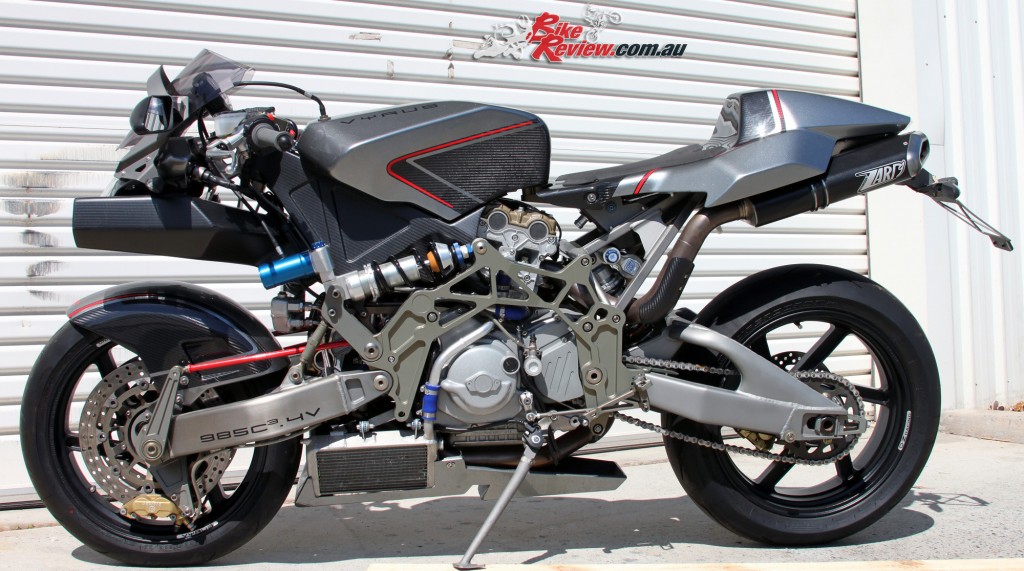
The hub-centre steering system with front swingarm is still a very unusual feature, despite the advantages it can offer.
Each of these bikes is made specially to order, built not only to the owner’s proportions but also to their taste, with a large variety of cosmetic options available from among the handmade components created specifically for these amazing bikes.
Competing with just the Bimota Tesi 3D, the Vyrus is one of very few motorcycles produced with hub-centre steering – an alternative system of suspension and steering, which eliminates braking compression seen in normal forks.
While this concept was seen as early as 1910 it has never seen widespread popularity, which has been attributed to most riders not being comfortable with the distinct feel of a motorcycle designed with hub-centre steering.
The Vyrus has proven a great success for Ascanio Rodorigo, with celebrities such as Tom Cruise ordering a 985C³ 4V, the 987’s smaller, earlier sibling.
The 985C³ is less powerful than the 987, incorporating a 999cc Ducati Testastretta motor and producing 150 horsepower – nothing to laugh at by any rate, especially with a claimed top speed of 292km/h.
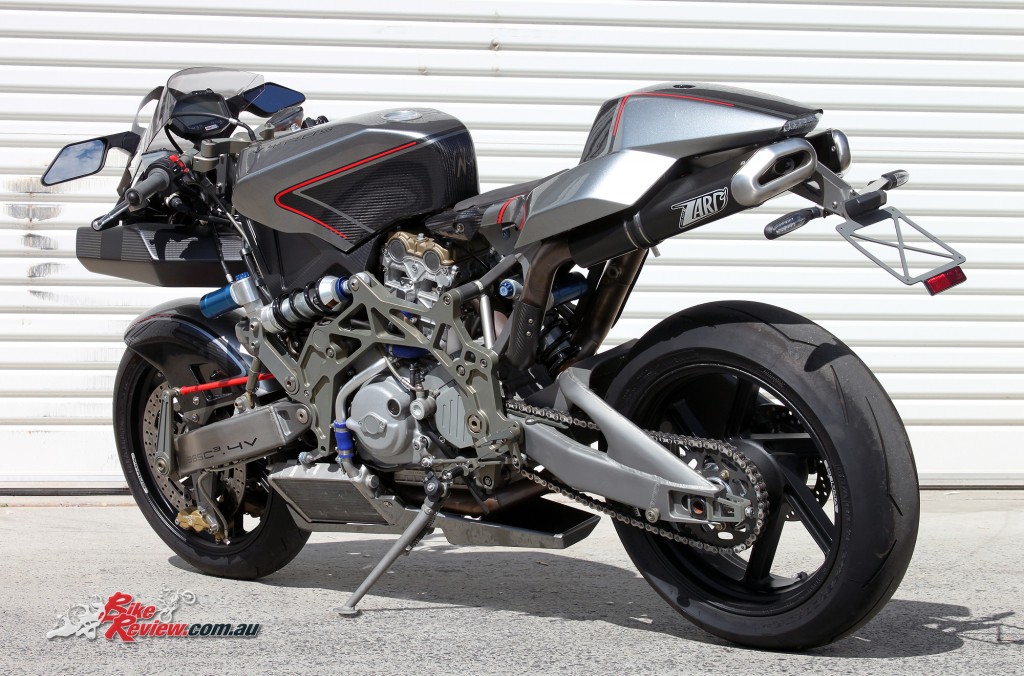
A 999cc Ducati Testastretta engine powers the 985, and offers 150hp, which for the Vyrus’s light weight offers an exception power to weight ratio.
First released in 2006, its liquid-cooled, four-stroke, 90° L-twin cylinder, desmodromic four-valve per cylinder engine was a massive upgrade over the previous 984 which made just 90.5 horsepower.
To Luis, an avid motorcycle collector – particularly of those with hub-centre steering – this 985C³ 4V was the final piece of the puzzle, completing the line up that contains a Bimota Tesi 1DS, Tesi 2D and Tesi 3D.
The Tesi 2D was in fact made by the Vyrus factory but sold by Bimota as an extremely limited run – just 25 models. The appeal of the 985C³ was of course the Testastretta engine and mind-boggling power to weight ratio.
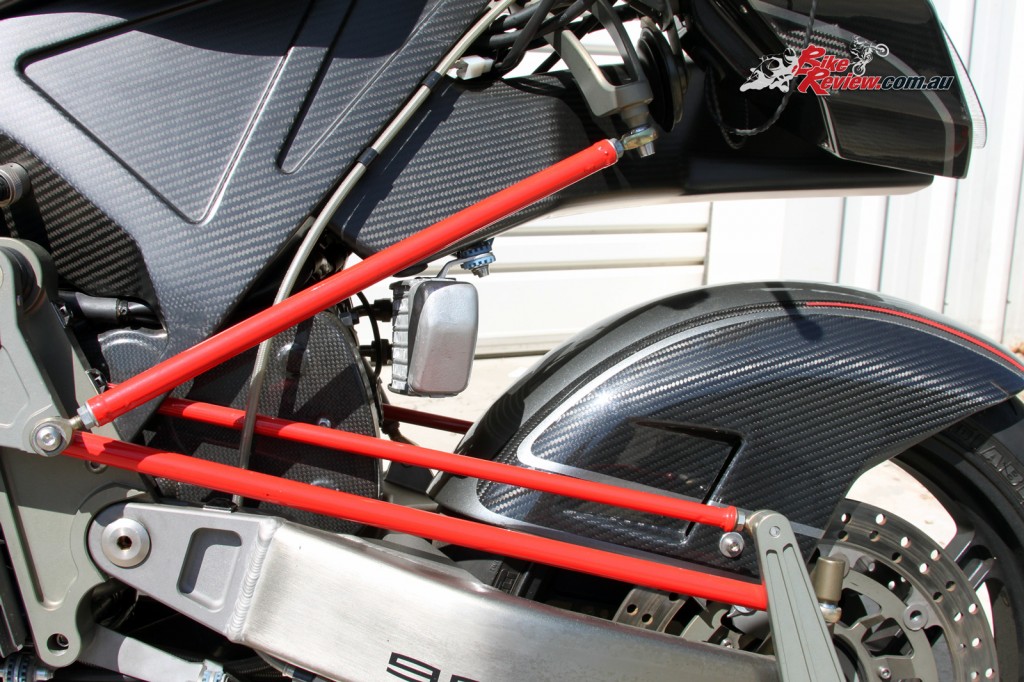
The hub centre steering takes fork dive out of the equation when cornering, particularly braking into a corner, for a totally unique riding experience.
“You can brake right into the apex, with no dive in the front end,” Luis explains, “The hub-centre steering separates steering, suspension and braking.
“As a result there is no compromise and the bike is very stable and linear.
“It takes some getting used too but is very confidence inspiring while being quite intimidating.
“This is just the quickest thing I have ever ridden,” he adds. Quite an impressive claim for somebody with 107 motorcycles!
From the front the first thing that hits you is of course the hub-centre steering, complete with swing arms and red steering rods. The Vyrus is far from a one-trick pony however, with amazing attention to detail in every aspect.
An aggressive carbon-fibre air-scoop extends past the simple and elegant headlight – bracketed by a generous screen, droopy dog-ear mirrors and folding LED blinkers.
The air-scoop itself arches back onto another notable design feature – the monocoque carbon-fibre headstock, incorporating the airbox, data logger, headlight bracket and steering axle bearings.
Mono means ‘single’ in Greek and ‘coque’ means skin in French and is also known as structural skin or stressed skin – with the structure supporting some or all of the load, rather than using a frame or internal chassis, covered by a secondary skin or cover.
Not only does this look extremely cool it is yet another of the features which allows the 985 to remain so light.
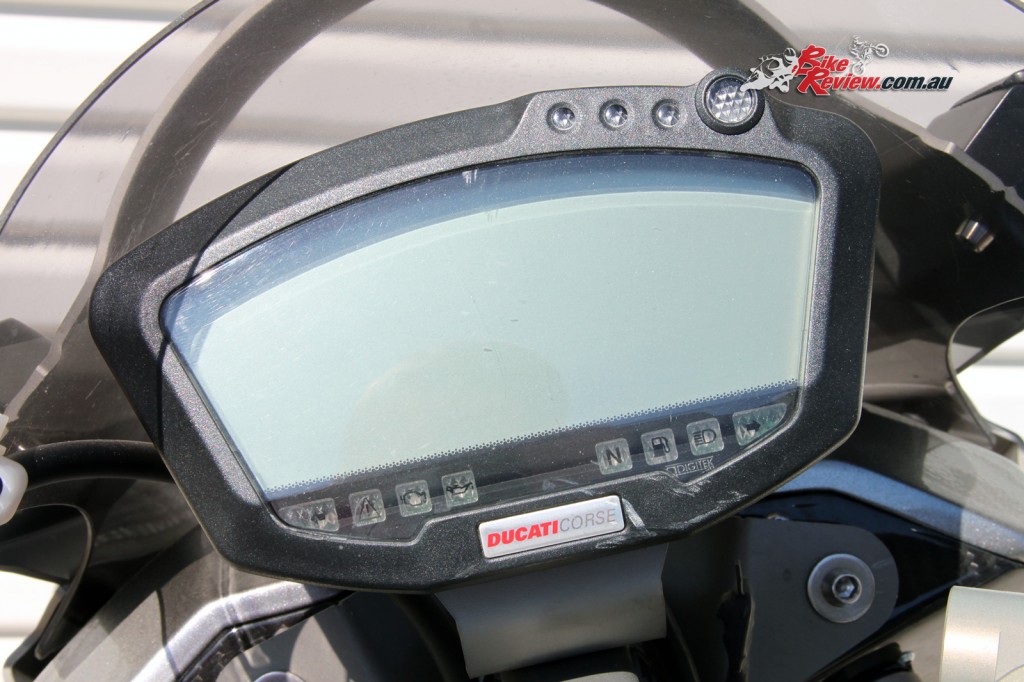
On a $100,000 motorcycle you expect the best, with a Ducati Corse dash used, with custom Vyrus programming.
The dash is a Ducati Corse piece, customised by Vyrus to suit their needs and proudly displays the Vyrus brand while the bike is running. Below the dash in the place of the triple tree clamp, is a single clamp, avoiding the issue with some earlier hub-centre steering motorcycles that had too narrow handlebars.
The handlebars hold the normal controls, with a two-position map switch on the left, next to the hydraulic clutch.
The engine is held in place by double omega aluminium frame spars that use the engine as a stressed member, while dual underside radiators take care of cooling due to the limited room available. Suspension on the front is an FG Engineering fully adjustable progressive-link system, while the rear boasts fully adjustable direct double suspension, also from FG.
Brembo four-piston calipers provide massive braking power on the front rotors, without the concerns normally attributed to compression in the forks – allowing faster and more efficient braking but often at the cost of tyre wear. A two-piston caliper on the rear provides stopping power, while both front and rear wheels are forged magnesium OZ Racing offerings.
The rear swingarm is another impressive detail, constructed of light alloy while remaining hollow to keep weight down. Above the rear wheel a ZARD exhaust system tucks in under the seat and not only sounds angry to match the overall look of the bike but also benefits from exhaust pipes specifically designed to different lengths and diameters in order to maximise performance.
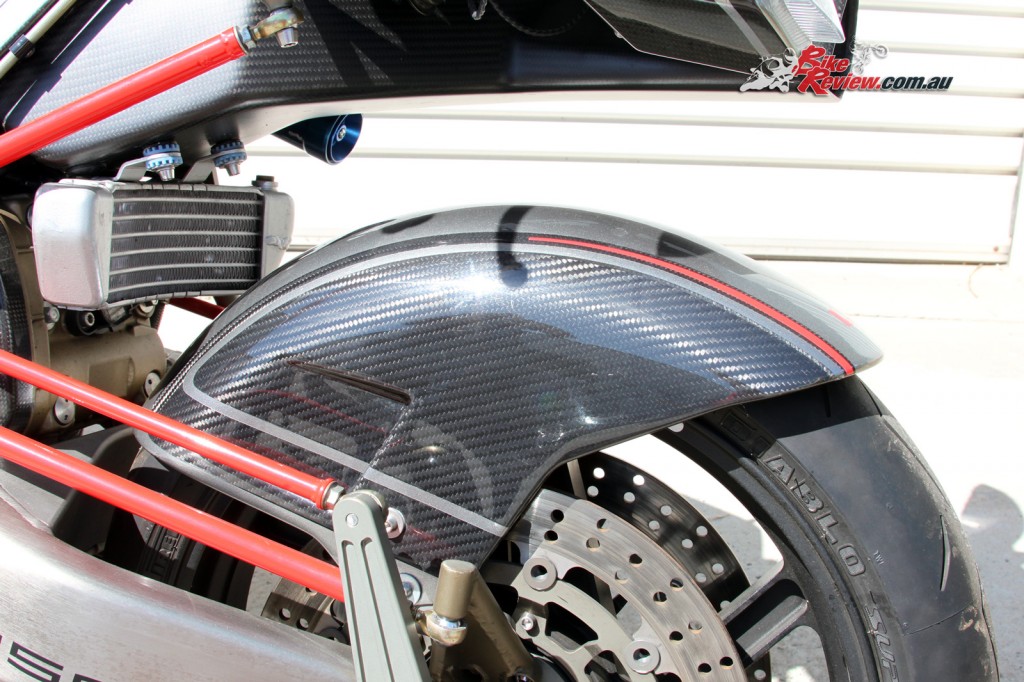
Everything that can be is carbon-fibre, with some pieces painted to match the red and silver theme, based on the swingarms and suspension rods.
Finishing off the bike is, of course, plenty of carbon, with a front guard, tank and rear tail section all constructed of this lightweight material. Sadly, most of it has been painted over in this Vyrus’s silver and red colour scheme – matching the steering rods and the various shades of metallic grey, from the swing arms to the omega frame. It’s an iconic look but hiding the carbon-fibre seems almost sinful.
Luis doesn’t seem to have any regrets despite a price tag of almost $100,000, “The bike is a lot of fun, out of the bottom end of a corner it just hammers.
“The useable power is between 60-150km/h and the bike tries to pull the front end straight into the air even with your weight right forward.”
Not only does this bike turn heads but it also showcases innovative and creative design – each bike is a masterpiece, deserving a place in any collector’s selection.
Check out Luis’s website featuring his collection: motogallur.com
SPECIFICATIONS
ENGINE:
999cc Ducati Testastretta, liquid-cooled, four-stroke, 90° L-twin cylinder, DOHC, desmodromic four-valve per cylinder, 104 x 58.8mm, 11.9:1, 155bhp, ZARD exhausts
CHASSIS & BODYWORK:
Double omega aluminium frame, carbon monocoque headstock, FG Engineering fully adjustable progressive-link front suspension system, fully adjustable direct double rear suspension, dual front Brembo four-piston calipers, single rear Brembo two-piston caliper, OZ Racing forged magnesium wheels, carbon-fibre front fender, tank, seat and tail


